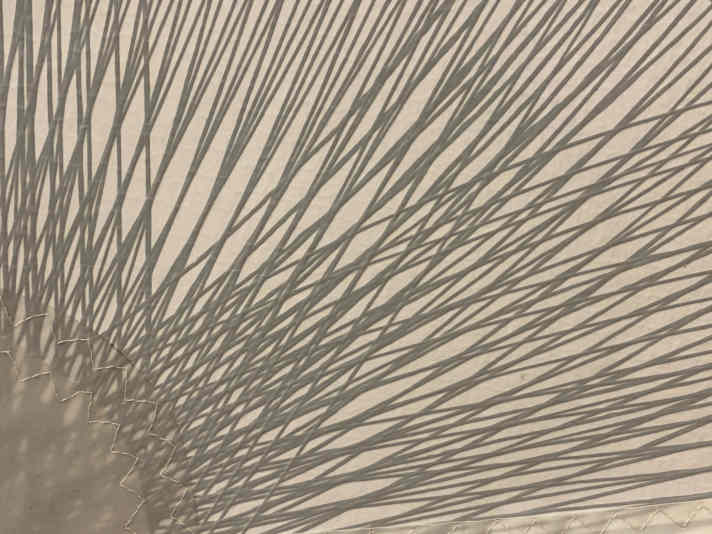
Vantage One is around 25 to 40 per cent cheaper than the One Sails Top Line 4 T due to the lower manufacturing costs, but follows the company's philosophy of adhesive-free membrane technology. The new "cloth" consists of protective tafetta fabric with one layer of thermoplastic film on each side. In between are the load-bearing fibres, which can be made of different materials. Carbon, Dyneema or Black Twaron as well as combinations of these high-performance fibres are possible. The film-fibre-film sandwich is laminated flat (i.e. not over a three-dimensional mould) under vacuum by thermoplastic fusion. According to Marco Haase from One Sails Germany the vacuum-sealing process of meat packaging, for example. The laminated panels are between three and six metres wide and are glued together. The sail is profiled by means of darts, just like a sheet sail. This cost-effective production method means that prices are only around 10 per cent higher than for a sheet sail made from a high-quality material such as HydraNet Radial.

The membrane is as durable as vacuum meat packaging
According to Haase, the membrane sails are not only inexpensive, but also light and durable. The raw weight of the membrane for boats from 35 to 55 feet is 260 to 280 grams per square metre, for 56 to 90 feet it is estimated at 410 to 450 square metres. Doublings and batten pockets are integrated so that only a little weight is added to the pure fabric, says Haase. Thanks to the combination of thermoplastic and taffeta, the service life is said to be very long. One Sails expects the Vantage One to last eight to ten years and recommends it for Mediterranean and blue water sailors due to its product characteristics. The target group is performance-orientated sailors who expect their sails to last a long time. The new membrane should be suitable for mainsails and headsails, including furling sails. One Sails offers various combinations of structural fibres, taffeta and films for Vantage One, depending on the intended use.
